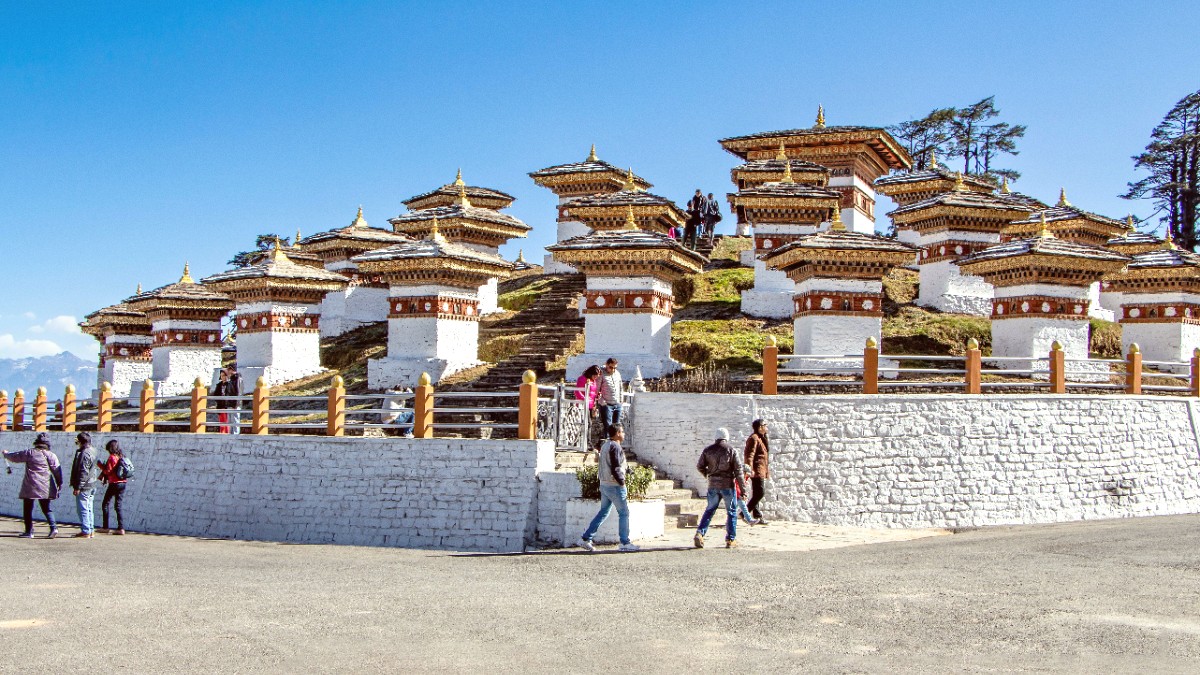
Bhutan
Bhutanese food developed in a high-altitude, agrarian society. Staples like rice, buckwheat, and root vegetables form the foundation.
Buddhist principles historically meant meat consumption was sparing, but it is common in modern Bhutan. The climate and available ingredients shaped hearty, warming dishes.
Red rice, buckwheat, chillies (often as a main ingredient), local cheese (datshi from yak or cow’s milk), pork, beef, chicken, yak meat, seasonal vegetables.
Robust, often spicy, and savory. Garlic, ginger, and onions form the aromatic base for many dishes.
Thimphu, as the capital, often has a wider array of dishes available from across the country.
The national dish, a hearty stew of chillies (ema) and local Bhutanese cheese (datshi). Spicy, creamy, and comforting.
Variations Kewa Datshi (potato) and Shamu Datshi (mushroom) are also common.
A flavorful pork stew, often cooked with dried pork, radishes, or spinach. Offers a savory and sometimes spicy taste.
A staple on most Bhutanese menus.
Spicy minced chicken stew, prepared with ginger, garlic, and other spices. A warming and aromatic dish.
Comforting and flavorful.
Hoentey are buckwheat dumplings, a Haa Valley specialty. Momos are popular Tibetan-style dumplings (meat, cheese, or veg).
Momos are widely available as snacks.
Zow (puffed rice) is a common light snack. Desserts are not a major part of traditional Bhutanese cuisine; fresh fruit is often served.
During religious festivals (Tshechus), special dishes and a wider array of meat dishes are prepared.
Elegant dining experiences with blends of Bhutanese, Indian, and international cuisine.
Popular spots offering a mix of local and international dishes with good atmosphere.
Affordable local eateries and growing options for international cuisine.
Vegetarian options are easy to find, with dishes like Shamu Datshi and Kewa Datshi. Vegan requires clear communication due to common use of butter and cheese.
Inform your guide to communicate with restaurants.
Halal and kosher food options are very limited or non-existent. Bhutan is predominantly Buddhist.
Communicate well in advance and consider bringing supplementary food items.
Awareness is low. Red rice and many stews are naturally gluten-free.
Clear communication with a translation card for specific needs.
Bring safe, non-perishable snacks for peace of mind.
Useful step for meal arrangements.
Some restaurants offer floor seating and low tables for a more immersive meal.
Enhances the cultural dining experience.
Combines relaxation with culinary enjoyment, offered at farm stays or wellness centers.
A local therapy followed by a traditional meal.
While no direct food tours for Thimphu are typically listed on GetYourGuide, explore it for general cultural experiences.
Bhutanese food is genuinely spicy. If sensitive, ask for "less chili."
Bhutanese cuisine relies on fresh, local ingredients including red rice, buckwheat, and various seasonal vegetables.
Pork, beef, chicken, and yak meat are common, often appearing in dried or stewed forms.
Spinach, ferns, potatoes, mushrooms, and various greens are widely used in local dishes.
Religious festivals often feature special food preparations, showing traditional communal sharing.
A unique cultural dining observation.
Meals are often served family-style, with dishes placed in the center for everyone to share.
Fosters communal dining.
Thimphu does not have an extensive, organized street food scene like other Asian cities.
Expect hearty, robust flavors. Portions are generous, reflecting Bhutanese hospitality.
Meals for tourists are often included in your pre-arranged tour package.
Communicate all your dietary needs to your tour operator well in advance. They can make arrangements with hotels and restaurants.